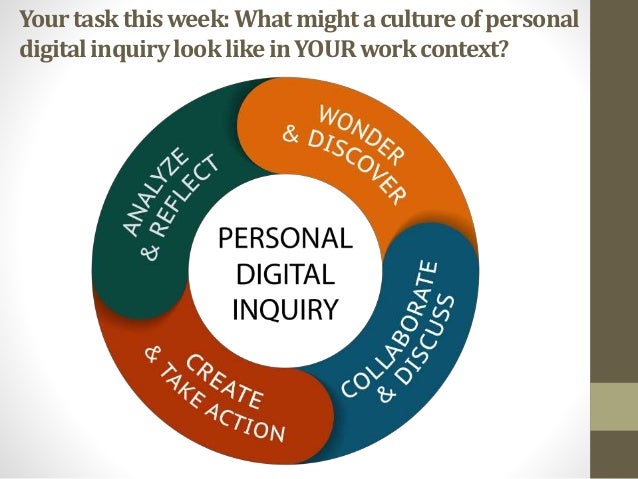 In September, fully recharged and anxious to talk about Inquiry-Based Learning and collaboration, I met with the 6th-grade team. Over the past several years 6th graders have taken part in an Information Skills class that incorporates media literacy, news literacy, online source evaluation and dabbling with Guided Inquiry through picture book biographies. These accessible biographies were used as the research catalyst for students as they engaged with the process of formulating questions, determining information needs and sources, digging deeper and synthesizing ideas to share new learning.
In September, fully recharged and anxious to talk about Inquiry-Based Learning and collaboration, I met with the 6th-grade team. Over the past several years 6th graders have taken part in an Information Skills class that incorporates media literacy, news literacy, online source evaluation and dabbling with Guided Inquiry through picture book biographies. These accessible biographies were used as the research catalyst for students as they engaged with the process of formulating questions, determining information needs and sources, digging deeper and synthesizing ideas to share new learning.The team decided that the last quarter on campus for each homeroom would integrate the InfoSkills practices with a PBL/IBL project that would lead to protest or activism. In December I was excited to meet with the 6th Grade Team again to talk about what this might look like. We met in the Library Learning Commons during one of the Focus on Inquiry times and produced this document.
We believe that failing forward is an option in IBL and PBL especially when it comes to student inquiry practice helping students to set new goals and learning challenges for themselves. Educators recognize that learning happens even when things don't work out as planned. Through reflection on their learning throughout the process and recognizing where they struggled and where they met with success students learn a great deal about themselves. I also know that if my colleagues do not see this collaboration as value added they will be reluctant to commit the time for the inquiry/project again. I have seen great and highly engaging projects downsized or disappear for a number of reasons. For many, it has been the time commitment and if the project is seen as integral to the curriculum and the students' learning. This is totally understandable for the point of view of the classroom teacher.
If IBL is to be explored the traditional teaching conventions framed by rigid schedules, teacher control of the process, and assessment can de-rail a teacher's enthusiasm for this challenge. IBL and PBL cannot comfortably be shoe-horned into traditional structures. So how do we make this work? First and foremost educators' understanding of collaboration, as opposed to collegiality, is important. In a collaborative effort, the lead teacher will view their co-teachers full partners including in the assessment stage. A digital portfolio of learning artifacts may help decentralize the responsibilities for assessing the students' work. When considering IBL or PBL the learning happens continuously and over time and is not readily summed up in a single letter or number grade. All of the learning artifacts including notes, information sources, conferences, goal setting documents, and planning calendars will make the final product/project much richer and will be part of the final assessment.
In order to plan for the IBL experience and the final on-campus quarter for each homeroom, we used the PDI organizing structure from the University of Rhode Island Summer Institute in Digital Inquiry created by Dr. Julie Coiro
Guided Inquiry: Activism Project, Grade 6
Learning Outcomes:
What is the essential question? What will students have learned?
Inquiry Practices:
Inquiry: Guide students to formulate framing questions to guide information seeking and evaluation.
Collaborate and Discuss: Explore, analyze, talk about, organize new knowledge gained from resources: include an interview or other adult connections in the community.
Participate and Create: Take notes, create interactive diagrams, write scripts, letters, organize ideas to share.
Reflect: Use screencasting or Flipgrid to reflect on the process, information, organization, purpose, receive feedback from peers
Purpose of Technology Use:
Giving Direction: i.e. choosing inquiry topics, searching for online content, discuss and curate relevant sites, citing sources.
Prompting: Encourage evaluation of online sources; dialog around topics
Making: Introduce, Google Sites, Adobe Spark, ThingLink, Book Creator, Anchor Podcasting app- guide students to choose media to express their understanding.
Reflecting: Involve students in using technologies to reflect, revisit, and connect their work to real-world issues and authentic audiences.
Features to Consider when designing Guided Inquiry projects for Grade 6.
Provide a sequenced list of steps by guiding students into the process and engaging interest.
Include multi-modal sources in the hyperlinked overview page: videos, images, interactive timelines
Provide safe searches and determing technology use.
While there is more work to be done, this exciting opportunity to integrate and collaborate is exactly what I wished for in September!
Works Cited
Coiro, Julie, et al. “Personal Inquiry and Online Research.” Reading Teacher, vol. 69, no. 5, Mar. 2016, pp. 483–492. EBSCOhost, doi:10.1002/trtr.1450.